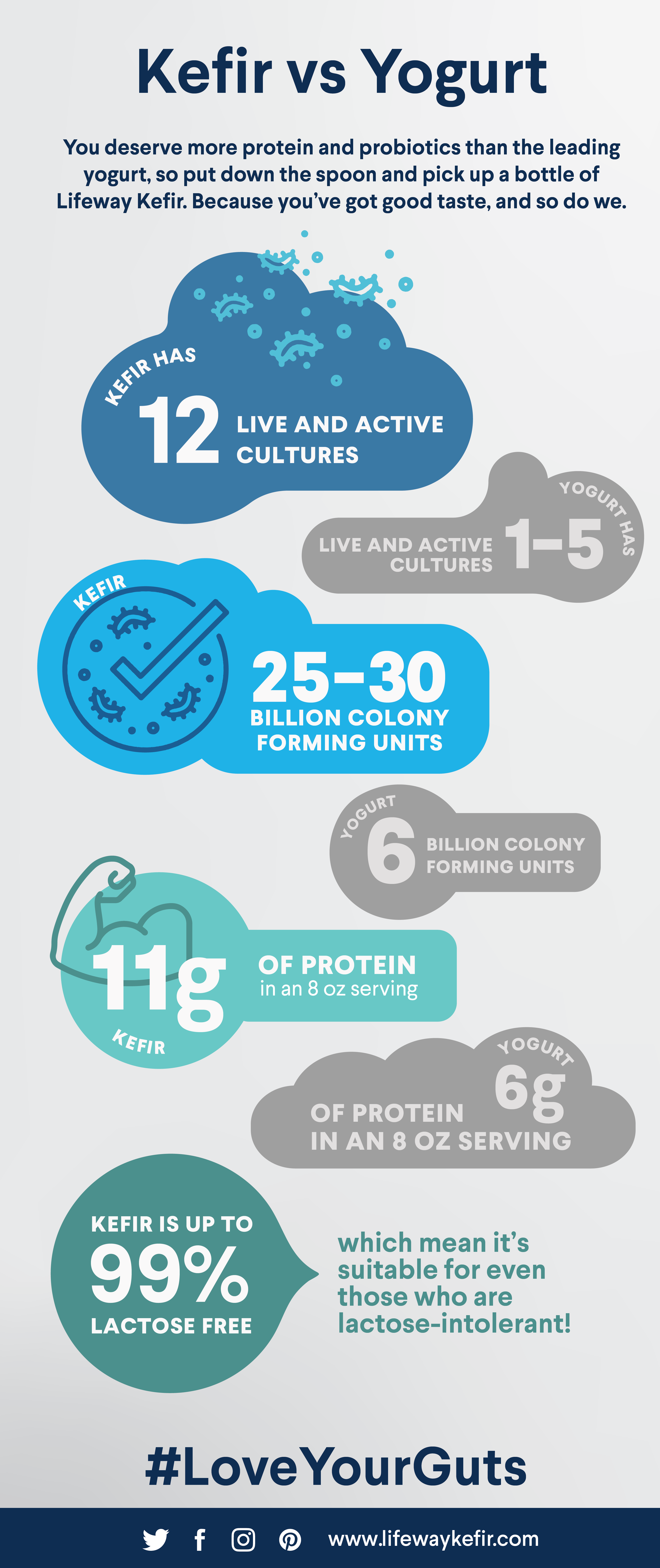What exactly is the difference between kefir and yogurt? They both start out as milk, they’re both fermented, and they’re both tart and tangy — yet they’re completely different products. We’ve got the lowdown on the biggest differences between kefir vs yogurt.
For starters, kefir has 12 different strains of live and active cultures and 25-30 billion Colony Forming Units (CFU), while the average yogurt can have anywhere from 1 to 5 strains with 6 billion CFU. That’s more than double the amount of probiotics! Plus, it’s also up to 99% lactose-free. This means that it’s suitable for even those who are lactose-intolerant.
In addition, there are 11 grams of protein in one 1-cup serving of kefir, while the average serving of low-fat yogurt only contains 6 grams of protein. Studies have found that protein is most satiating macronutrient and can help us feel fuller faster.
Our kefir is lightly sweetened with only 1 gram of added sugar per 1 ounce serving. Some yogurts can have 4 to 9 grams total added sugars. Long story short, kefir has a whole lot more probiotics and a lot less sugar (and it’s better in smoothies)!
Check out our handy infographic below to get the rundown on the differences between kefir and yogurt:
